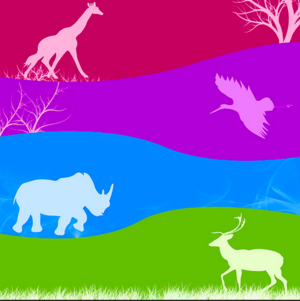
Biodiversity is essential for ecosystem stability and resilience. However, it is increasingly threatened by various human activities and environmental changes. Understanding these threats is crucial for developing strategies to protect and preserve our natural world.
Major Threats to Biodiversity[edit | edit source]
- Human Population Growth: Rapid human population growth leads to increased demand for resources and space, often at the expense of natural habitats. Urban expansion, agriculture, and infrastructure development destroy ecosystems, leading to a decline in biodiversity.
- Habitat Encroachment and Loss: Habitat destruction is one of the leading causes of biodiversity loss. Deforestation, wetland draining, and land conversion for agriculture reduce the available habitat for countless species, pushing many to the brink of extinction.
- Pollution and Climate Change: Pollution from industrial, agricultural, and urban sources contaminates air, water, and soil, harming wildlife and ecosystems. Climate change, driven by greenhouse gas emissions, alters habitats and disrupts the balance of ecosystems, leading to species migration and loss.
- Overexploitation: Overfishing, hunting, logging, and unsustainable agricultural practices deplete natural resources faster than they can replenish, leading to population declines and loss of biodiversity.
- Invasive Species: Non-native species introduced intentionally or accidentally can outcompete, prey on, or bring diseases to native species, significantly altering local ecosystems.
- Economic and Political Factors: Lack of political will, inadequate funding for conservation, and policies that prioritize short-term economic gains over long-term environmental sustainability exacerbate biodiversity loss.
- Water Mismanagement: Over-extraction of water for agriculture, industry, and domestic use reduces water availability for ecosystems, leading to the degradation of wetlands and aquatic habitats.
- Recreational Activities: Activities such as off-road driving, hiking, and boating can damage sensitive habitats and disturb wildlife, contributing to biodiversity loss.
- Diseases and Epidemics: Diseases can spread rapidly through plant and animal populations, often exacerbated by human activities and environmental changes, leading to significant declines in biodiversity.
Addressing Biodiversity Threats[edit | edit source]
- Conservation Efforts: Protecting natural habitats, restoring degraded ecosystems, and establishing protected areas are crucial for conserving biodiversity.
- Sustainable Practices: Promoting sustainable agriculture, fishing, and forestry practices helps maintain ecosystem health and resource availability.
- Policy and Legislation: Developing and enforcing environmental policies and laws that prioritize biodiversity conservation is essential.
- Education and Awareness: Raising public awareness about the importance of biodiversity and encouraging community involvement in conservation efforts can lead to positive change.
Protecting biodiversity requires a multifaceted approach that addresses the various threats posed by human activities and environmental changes. Sustainable practices, conservation efforts, and informed policies are crucial in safeguarding our planet's diverse ecosystems.
References[edit | edit source]
- Convention on Biological Diversity (CBD): Major Threats to Biodiversity
- World Wildlife Fund (WWF): Threats to Biodiversity
- National Geographic: Biodiversity
- United Nations Environment Programme (UNEP): Global Biodiversity Outlook
See also[edit | edit source]
- List of environmental issues
- http://web.archive.org/web/20200922084517/http://www.biodiv.be/biodiversity/threats/ - Convention on Biological Diversity, Major Threats